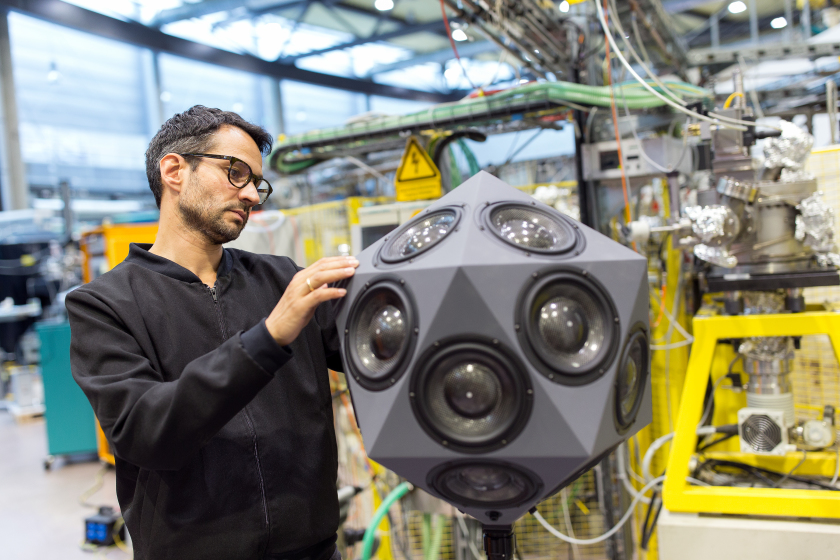Acoustic sculptures BESSY VSR - premiere at Saturday, 30. September 2017

Gerriet K. Sharma with a special icosaedron loudspeaker at BESSY II. © M. Setzpfandt
For four days, the Akademie der Künste on Hanseatenweg will be a creative lab for musical experimentation, staging concerts, artist talks, and workshops. With its 28 debuts and premieres, and more than 100 artists from 27 countries, the 2nd edition of KONTAKTE is the hub for electroacoustic music and sound art in Berlin.
The festival presents the premiere of soundproject gleAM (2017) by sound artist Gerriet K. Sharma. You might experience acoustical sculptures, produced with a special sound technology and inspired by accelerator physics of BESSY II and BESSY VSR.
The premiere is followed by a discussion in the presence of the artist, Geriet K. Sharma, and two physicists, Paul Goslawski und Godehard Wüstefeld.
Premiere of project gleAM: 17:30 Saturday, 30. September 2017
Tickets here:
More Information on the soundart-project.
red.
https://www.helmholtz-berlin.de/pubbin/news_seite?nid=14722;sprache=en
- Copy link
-
Ernst Eckhard Koch Prize and Innovation Award on Synchrotron Radiation 2025
At the 27th BESSY@HZB User Meeting, the Friends of HZB honoured the dissertation of Dr Enggar Pramanto Wibowo (Friedrich-Alexander University Erlangen-Nuremberg). The Innovation Award on Synchrotron Radiation 2025 went to Prof. Tim Salditt (Georg-August-University Göttingen) and Professors Danny D. Jonigk and Maximilian Ackermann (both, University Hospital of RWTH Aachen University).
-
Synchrotron radiation sources: toolboxes for quantum technologies
Synchrotron radiation sources generate highly brilliant light pulses, ranging from infrared to hard X-rays, which can be used to gain deep insights into complex materials. An international team has now published an overview on synchrotron methods for the further development of quantum materials and technologies in the journal Advanced Functional Materials: Using concrete examples, they show how these unique tools can help to unlock the potential of quantum technologies such as quantum computing, overcome production barriers and pave the way for future breakthroughs.
-
MAX IV and BESSY II initiate new collaboration to advance materials science
Swedish national synchrotron laboratory MAX IV and Helmholtz-Zentrum Berlin (HZB) with BESSY II light source jointly announce the signing of a 5-year Cooperation Agreement. The new agreement establishes a framework to strengthen cooperation for operational and technological development in the highlighted fields of accelerator research and development, beamlines and optics, endstations and sample environments as well as digitalisation and data science.
